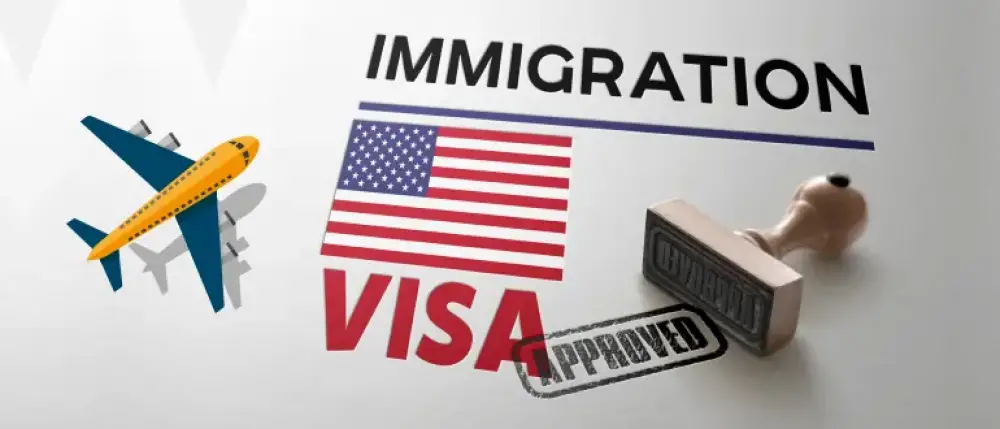Introduction
Applying for a U.S. visa requires careful planning and timing. Whether you’re seeking a student visa, work visa, or immigrant visa, understanding the visa processing timeline is crucial to avoid delays and last-minute stress.
In this guide, we’ll break down the different visa categories, how long they typically take to process, and when you should start your application to ensure a smooth experience.
1. Understanding Visa Processing Times
Visa processing times vary based on:
✅ The type of visa (student, work, family-based, etc.).
✅ The U.S. embassy or consulate where you apply.
✅ Demand and backlogs in the immigration system.
✅ Additional security checks and administrative processing.
You can check estimated visa processing times on the U.S. Department of State’s website:
🔍 https://travel.state.gov
Tip: Always check for recent processing delays before submitting your application.
2. General Timeline for Different Visa Types
Below is a breakdown of common U.S. visa categories and when you should start your application.
📌 Student Visa (F-1, J-1, M-1)
- When to Apply: At least 6-12 months before your intended start date.
- Processing Time: Varies by country; usually 3-6 weeks.
- Key Steps:
✅ Get accepted into a SEVP-approved school.
✅ Receive your Form I-20 or DS-2019 from the institution.
✅ Pay the SEVIS fee and schedule your visa interview.
✅ Prepare financial proof and supporting documents.
Tip: Visa interview slots fill up quickly, especially during peak months (June-August). Book your appointment early!
📌 Work Visa (H-1B, L-1, O-1, TN)
- When to Apply: At least 6-12 months before your job start date.
- Processing Time: 4-8 months (can be expedited with Premium Processing).
- Key Steps:
✅ Employer submits a Labor Condition Application (LCA) to the Department of Labor.
✅ Employer files Form I-129 (Petition for a Nonimmigrant Worker).
✅ Wait for USCIS approval before scheduling a visa interview.
Tip: The H-1B visa cap opens on April 1 each year, and approvals are lottery-based. If you’re applying for H-1B, start planning in January or February.
📌 Family-Based Immigrant Visa (IR-1, CR-1, F2A, F2B, etc.)
- When to Apply: 12-24 months before planning to move to the U.S.
- Processing Time: 1-2+ years, depending on the visa category.
- Key Steps:
✅ U.S. citizen or green card holder files Form I-130 (Petition for Alien Relative).
✅ Wait for USCIS and National Visa Center (NVC) processing.
✅ Complete visa application (DS-260) and medical exam before the interview.
Tip: Immediate relatives (spouse, parents, and minor children of U.S. citizens) typically have shorter wait times than preference-based categories.
📌 Green Card Through Employment (EB-1, EB-2, EB-3)
- When to Apply: At least 1-2 years before you plan to move.
- Processing Time: 12-24 months (can be longer if there’s a backlog).
- Key Steps:
✅ Employer files PERM labor certification (if required).
✅ Employer submits Form I-140 (Immigrant Petition for Alien Worker).
✅ Once approved, apply for Adjustment of Status (Form I-485) or Consular Processing.
Tip: Check the Visa Bulletin monthly for priority date updates:
🔍 https://travel.state.gov/content/travel/en/legal/visa-law0/visa-bulletin.html
3. Best Time to Start Your U.S. Visa Application
To avoid unnecessary delays, use this general timeline:
| Visa Type | When to Start Application |
| Student Visa (F-1, J-1) | 6-12 months before school start date |
| Work Visa (H-1B, L-1) | 6-12 months before employment start date |
| Family-Based Green Card | 12-24 months in advance |
| Employment-Based Green Card | 12-24 months in advance |
| Tourist Visa (B-1/B-2) | 3-6 months before travel |
| Fiancé(e) Visa (K-1) | 8-12 months before wedding in the U.S. |
Tip: If you need your visa quickly, check if Premium Processing is available for your visa category.
4. Factors That Can Delay Your Visa Application
⏳ Visa Backlogs: High demand and country-specific wait times can cause delays.
⏳ Security Checks: Some applicants may undergo additional screening based on travel history or nationality.
⏳ Incomplete Documents: Errors or missing paperwork can result in Request for Evidence (RFE).
⏳ Interview Availability: Embassy/consulate backlogs can make it hard to get an appointment.
Tip: Avoid delays by double-checking your application, submitting documents on time, and tracking updates on the USCIS website.
5. Tracking Your Visa Application Status
You can check your visa application status online:
🔍 For Nonimmigrant Visas (Tourist, Student, Work, etc.): https://ceac.state.gov/ceac/
🔍 For Immigrant Visas (Green Card, Family-Based, etc.): https://egov.uscis.gov/casestatus/
Tip: Keep your case number and receipt number handy to track your progress.
Conclusion
Starting your visa application early is the best way to ensure a smooth process and avoid delays. Depending on your visa type, you may need 6-24 months of preparation.
By planning ahead, checking processing times, and ensuring all documents are in order, you can increase your chances of a successful visa approval.
If you’re unsure about your timeline, consult a trusted immigration attorney or advisor to guide you through the process!

